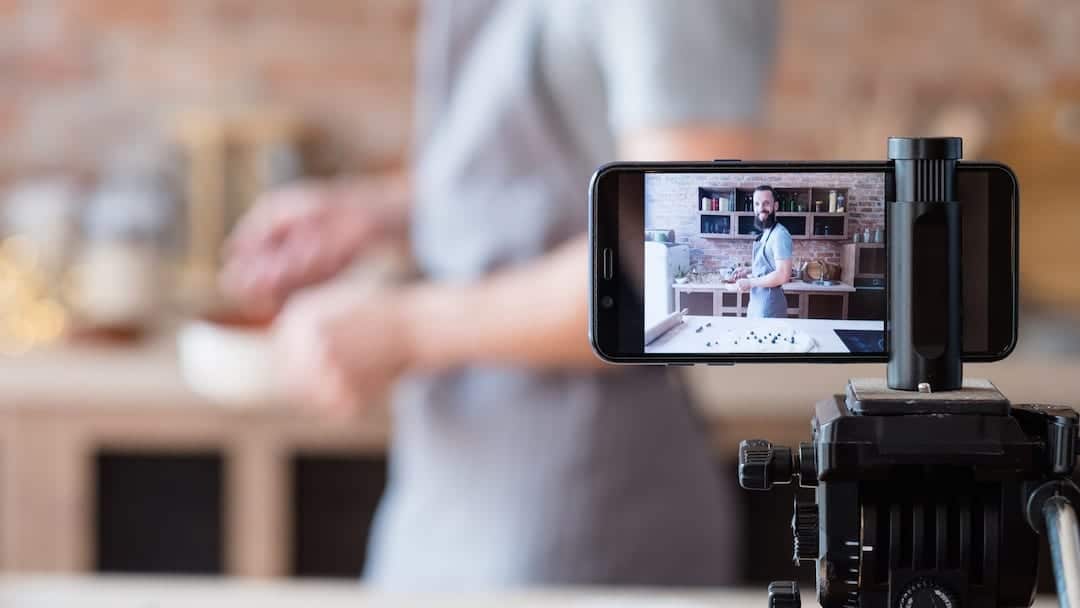In the past, few businesses have shot and edited their own DIY marketing videos. That was mostly done by very small businesses without the budgets to hire professional production companies. However once COVID-19 hit, the use of DIY business videos rose sharply. But should all businesses do this? Let’s look at the pros and cons.
Is It a Good Idea for Businesses to Produce DIY Marketing Videos?
Generally speaking, I’ve always felt that this is not a good idea for most businesses. When a viewer looks at a video, they subconsciously ascribe the quality of the video to the quality of the company; analyzing the quality of the business’ services and products. So, if a business wants to appear professional, then the quality of the videos they put out should be professional.
If you’re like most people now, you’ve probably watched hundreds of videos on the web and on social media. You’ve probably seen some videos with shaky cameras, poor framing, and bad sound. Think about what you’ve done when you’ve watched these unprofessional-looking videos. Most people will stop watching immediately. They’ll get off the page or go right past it. Yet, if video quality is decent, they are more likely to stick around and watch.
COVID-19 Pandemic: DIY Marketing Videos Became a Necessity
Everything changed when businesses had to close due to the need for everyone to isolate. Yet companies still needed to communicate with their customers. Since they could not bring in professional crews, they did the next best thing. They created the videos themselves.
Most of these videos were created on what just about everyone has access to these days. The cameras on their phones. They began using their phones to capture footage, and they used the editing process to make the footage work. And it seems the business community has accepted these videos, given the current situation.
The only other option was to stop communicating with customers, and this was unthinkable. Companies had to adjust, and they have.
Since that time, the country and businesses have begun to open up, and this means that at least some production companies are back to work. However, we’re still seeing the use of phone cameras in national commercials put out by large companies or retailers. It appears that these commercials are still acceptable during these times. After all, it’s the safest process given that COVID-19 is still out there.
Should You Produce DIY Videos In Your Business?
Currently, I’d have to say yes to most businesses. Many businesses have lost a lot of money and are now forced to lower their budgets substantially. These self-created videos can be an inexpensive option. It’s important for many businesses to continue advertising. If this is your strategy, go for it!
DIY videos can also be used for public relations purposes as well as for marketing. It’s essential to keep your market updated on your business during the pandemic.
However, be careful. Even with self-created videos there’s a range of quality you can get. You don’t want to put out junk. Even though the public is generally accepting self-created work, you can still lose them if you’re not careful. I’ll share a number of tips designed to help you create the best quality self-created videos possible.
7 Tips for Increasing the Quality of Your DIY Marketing Videos
Most of you will be using the camera in your iPhone or Android device, so that’s what we’ll discuss.
1. Keep Your Background Plain
You don’t want a busy background with a lot of visuals or motion to pull the viewers eyes away from whatever you’re featuring on-camera. A busy background will also cause the camera autofocus to keep changing. So, keep your background reasonably plain.
2. Position Your Camera at the Right Distance
Ideally, set it up around 3-5 feet from whatever or whoever you’re showing. If you place it farther, your camera might have difficulty focusing and the main subject of the video won’t be easy to see. If you place the camera too close, it might look somewhat distorted. So, 3-5 feet is the magic range where you’re getting your ideal shot.
This will help your camera to stay in focus better. Of course, you also don’t want it right up to your face either. That just doesn’t look good. You can frame it so you have a headshot if you wish, but be careful not to get so close that you’re larger than life or distorted. Nobody wants to see your skin pores up close!
Also, if you’re using your camera’s built in microphone, it needs to be fairly close to minimize background sounds or echoes.
3. Almost Always Shoot Using Landscape Mode
Portrait mode with a vertical image is occasionally okay, but you’ll usually want to shoot horizontally. Professional videos are shot this way, and using horizontal mode will help your video to look similar. Also consider that a vertical image doesn’t work well for most social media platforms. The only exception to this is on Instagram. They use portrait mode, and a vertical image will fit in there.
One other example of a time when vertical mode might work is when you’re editing together several images on the screen. I’ve seen some commercials show 2-3 people side by side using vertical images.
4. Consider How Your Video Will Be Edited
Editing and post-production can make a huge difference to the look and viewer experience of your video. You may want to consider hiring a professional editor. They can be affordable. And while there are programs available for non-editors, an experienced editor will have the software, skills and tricks needed to give you more professional looking results. Since they can conduct their services remotely, it works well during COVID-19.
What can you do that will make a difference to your video with editing? A lot! Here are just some of the things you can do:
- Get rid of mistakes, pauses and stumbles
- Pick your best comments and takes
- Add on-screen words and show titles
- Add graphics
- Edit in video clips and photos that you have on-hand
- Include stock photos and stock video clips
- Color correction
- Sound correction
- Lighting correction
- Add a voiceover
- Add music
So how do you plan knowing that you or a professional editor will be editing the video? Don’t be afraid to start over. Keep at it until you record a take you’re happy with. Remember, even professional spokespeople use multiple takes to get it right. You’ll also want to record an additional 5-10 seconds before and after you speak. Just look at the camera during that extra time. This will be helpful to the editor, but of course that time won’t appear on-camera.
5. Get a Microphone
You can purchase a microphone inexpensively on the web. This should be used instead of the phone microphone. This can make a very notable difference to the sound quality.
6. Use a Tripod
This does away with a shaky camera shot, which can radically increase the professional quality of the video. You can also find these throughout major sales sites such as Amazon. If you can’t spring for a tripod, at least set something up nearby. There are adapters you can use that will secure your phone to the tripod. Remember to keep the camera at eye-level. You do not want the camera looking up at someone, or looking down. This tends to reduce the sense of quality. After all, nobody really wants to see your ceiling.
7. Get Plenty of Light on the Subject
Whether you’re shooting a person or an object, you’ll want plenty of light, preferably coming from multiple directions. Try to avoid shadows on-screen. There are lights available for this purpose on sites like Amazon, but you may be able to get away with your home lights. You might want to take some video and check out the lighting on a big screen such as on your computer monitor. Work with it until you get a reasonably good look.
If you put all these tips into action, you should be able to create a decent looking video for your business. While it will take a little preparation, and there are some costs involved, ultimately it will help the look of your video in a big way.

